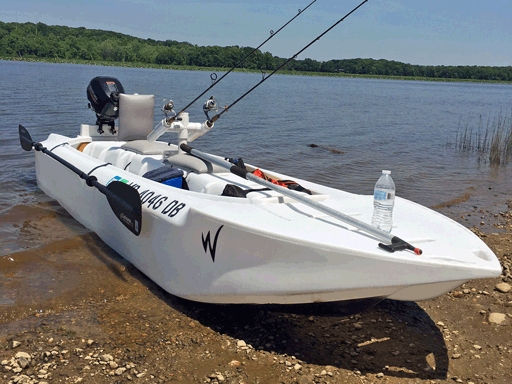Updated February 2, 2025
Micronautical design is about making small watercraft such as kayaks, canoes, and micro skiffs that are better adapted to the people who use them, and through this, improve the performance of these boats. These improvements are made possible by a patented invention that combines a twin-hull (catamaran) with a saddle seat that’s similar the seat found in personal watercraft (PWC, a.k.a Jet-Ski) and in all-terrain vehicles (ATV) and snowmobiles.
Micronautics looks at the people who go in a small vessel not just as its users and passengers, but as an integral part of the boat itself. Unlike bigger boats, the presence and behavior of a small craft’s users has a major and often critical effect on its performance, in more than one way. For example, an S4 Microskiff user who weighs 160 lbs weighs as much as the boat and a 6 HP motor combined.
The application of Micronautical design in kayaks and other small craft improves their ergonomics, bio mechanics, lateral stability, tracking, speed, mobility, portabiity, seaworthiness, versatility, safety, and ‘fishability’ – a term that describes the kayak’s usefulness as a ‘fishing machine’, namely a fishing platform.
Micronautical design is applicable to both human powered and motorized kayaks, whether they are outfitted with electric trolling motors, or powerful outboard gas engines.
Among the multiple advantages that Micronautical design offers is the fact that kayaks where it is implemented are back pain free, and they are comfortable for people with back problems and disabilities, big and heavy people, and elderly people.
Micronautics also enable a much greater degree of stability and seaworthiness in very small and lightweight craft. For example, currently, the world’s most stable kayak is the Wavewalk S4, which is also the fastest motorized kayak, as well as a most seaworthy portable boat whose performance in the ocean is comparable to that of inflatable dinghies.
Learn more about the products in which Micronautical Design is currently implemented: Wavewalk Kayaks and Portable Boats »

